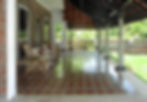Sustainable Architecture in a Different Perspective
- Benny Kuriakose
- Jan 29, 2020
- 7 min read
Updated: May 20, 2022
Every region’s architecture evolved in response to its climate, culture, and native materials, among other factors. But, the so-called modern buildings of today tend to follow the same style and design principles irrespective of the local culture, climate and materials. In a hot region, some of these glass buildings let in all the heat, and the energy consumed to cool them is sky-high. They result in unsustainable buildings that look the same everywhere in the world. To blindly follow an international sustainable architecture style is dangerous. We need to look into our own roots and native architecture to find the solutions. Thus, this blog attempts to clear the air about what is sustainable architecture, and how to build sustainable buildings.

List of Contents
1. What Is Sustainable Architecture?
Sustainable development should meet the needs of the present without compromising the ability of future generations to meet their own. This definition is given in the "Our Common Future" report, commonly referred to as the Brundtland Report. But I like two very old statements which conveyed the essence of sustainable living when the word was not common. The first one by John Muir from the late 19th Century- "Not blind opposition to progress, but opposition to blind progress" expresses why blindly following trends do not work out in the long run. The second one by Mahatma Gandhi from 1909- “The world has enough for everyone's need, but not enough for everyone's greed” emphasizes humble living conditions that satisfy the needs of all people.

Sustainable Architecture will vary according to time and place. What is sustainable in Assam, may not be sustainable in Kerala or Rajasthan. Bamboo buildings might be common in Assam, but in Rajasthan, the material may have to be transported for a long distance. What was sustainable in the 1970s may not be sustainable fifty years later in the 2020s. During the last 35 years, the cement price has increased 15 times, while the labour rates have multiplied 30 times. The equation has changed. Then, how can we commonly categorize "green architecture" as platinum, gold, or silver based on specific points throughout India?

2. Why Is Sustainable Architecture Important?
Each year, building construction consumes 25% of all virgin wood and 40% of all raw stone, gravel, and sand utilised worldwide. Globally, buildings consume 16% of the water, 40% of the energy and close to 70% of the sulphur oxides are produced because of the electricity used to power, houses and offices- Dimson, 1996. A study done by US Energy Information Agency says that buildings constructed before 1920 are more energy-efficient than those put up between 1920 and 2000.
"Poverty is the greatest pollution", said Mrs Indira Gandhi, the former prime minister in the 1972 UN Conference on Human Settlements. She linked poverty and the environment. 6% of the world’s population consumes more than 35% of its resources (an old statement, but still valid). I have talked to many building professionals and none of them believes that the concrete buildings of today will last for more than 75 years, considering the bad quality workmanship. The World Bank in a 1992 study said that unless our buildings are used for at least 75 years we are never going to solve the housing problem.
What sustainability are we talking about, if our buildings can last only twenty-five years? What sustainability are we talking about when every third building develops leaks within the first ten years of its lifetime? A study done in the UK in the early 1970s has shown that one-third of the government buildings built with concrete is leaking and it was referred to as the "Flat Roof Scandal" by the Architectural Review magazine in 1972.
I am attaching an image showing statistics of the per capita carbon emissions. An average American produces 16.1 tonnes of per capita carbon emission while an average Indian produces 1.9 tonnes. If this 1.9 Tonne becomes 16.1 Tonnes, the issue will become critical. For some of the highly populated countries such as India, China, Indonesia, Pakistan etc. (500-600 crores), the figures are low when compared with the developed countries (100 crores). Much of India has a tiny environmental impact per capita compared to the west and their examples of green design. In one way, it is the poverty of the poor nations in the world which is preventing global warming and climate change. Hence, out of 700 crore people in the world, only 100 crore is responsible for global warming.

The book Limits to Growth (LTG, 1972) is a computer simulation study of exponential economic and population growth with finite resources. Now waste disposal has become a very serious issue in addition to the limited resources. So far architects and planners seem to ignore all these facts. The problem is around the corner and it is high time the building professionals did things from a different perspective. They still work in two dimensions. The third dimension sinking of the land and sea-level rise is not taken into account. The fourth dimension TIME is ignored as well. The architecture I know is very complex and has many dimensions such as physical, psychological, social, cultural, political etc.

Being sustainable means fulfilling all the above-mentioned aspects. Therefore, it is essential that we begin to implement the sustainable architecture concept as it is the viable solution to get things under control. All new constructions can be made sustainable based on their location. This way, an architecture unique to every region can develop and flourish in all places.
3. Practising Sustainable Design
But, how to make sustainable architecture a reality? Many of us don’t know the first steps to green architecture and eco-friendly living. Fret not, here are some ways of constructing sustainable buildings:
3.1 Use of Natural Building Materials and Traditional Construction Techniques
Any construction which uses cement and concrete will be irreversible. It is irreversible because once the building is dismantled, it cannot be reused and produces a large number of waste materials. However, buildings that use timber, brick masonry with lime or earth mortar, steel, etc., are reversible. They can all be reused in the same or other projects if they are not heavily damaged beyond repair. This can lead to a reduction of waste produced by the construction and demolition industry.

The stalls in the majority of the construction exhibitions are occupied by the modern kitchen, bathroom and chemical companies. None of these construction chemicals can replace traditional craftsmanship. While many traditional methods of building techniques or traditional materials are on the verge of extinction, some like the Athangudi tiles or Chettinad tiles is making a comeback. It does not need any firing or electricity. It is completely handmade and eco-friendly. Most traditional arts and crafts are also dependent on architecture. Even now there are people who can do them although their number is small. Traditional methods of construction can be used even today as they meet the needs of the people while being eco-friendly. There are many more sustainable construction techniques and building materials that need to be revived. Architects and other people involved in construction should recognise their benefits and incorporate them into their creations.


3.2 Conservation of Energy and Resources
Infrastructure development is one of the highest energy-consuming activities in the world. Steel, aluminium and cement are very high energy-consuming materials. Generally less energy-intensive techniques and materials such as lime, earth, athangudi tiles, timber, bamboo etc. are more labour intensive. But in a country like India, where cheap labour is available, these techniques can be used. They will have the dual advantage of reducing construction-related carbon dioxide emissions as well as generating employment.

3.3 Recycling of Materials
Using parts from demolished buildings (demolition shall be the last resort) is a necessary step when designing green buildings. It will be less energy-consuming and eco-friendly. Reusing old doors, windows, bricks, roof members, roof tiles etc. can make the building more sustainable.


3.4 Climate Responsive Architecture
Local and traditional methods of achieving climatic comfort are ignored in many of today’s buildings. Large areas of glass are employed in all climates – whether hot or cold.
3.5 Conservation of Old Buildings
When 100 new buildings are constructed, 50 sound old buildings are demolished. No wonder the number of families (not people) without a house in India has increased from 25 million in 1984 to 50 million families now, despite all the developments in the country. As Laurie Baker said, "it is a shame to the building profession that we had allowed these numbers to increase". Although the Government of India thinks that houses will be given to all by 2024, I feel that we don't have enough resources to build these houses in concrete or steel.


A study done in the UK shows that it takes 35-50 years for an energy-efficient new home to recover the carbon expended in constructing it. No matter how eco-friendly a design is, it will still make an impact on the environment. The most sustainable building is one that is already existing. Conserving our historic cities is smart growth and we can have a smart city only then. Reusing an existing building, instead of demolishing it and replacing it with a new one, is a sustainable concept and a good way to conserve energy, money, and materials. Conservation uses a 40% lesser amount of materials and rehabilitation of 2-3% of our housing stock means perpetual employment in the building industry. Infrastructure investment is reduced and the greenfield is also preserved.
4. A Case Study of Sustainable Architecture in India- Chapredi Village, Bhuj
What is sustainability when the buildings built for victims of natural disasters do not match their social & cultural requirements? When we talk about sustainability, it is not only the environmental sustainability that is important but also the economic and socio-cultural sustainability as seen in the Chapredi village in Bhuj constructed by us for the 2001 Gujarat earthquake victims. The houses are constructed using cement stabilised earth blocks, moulded from the local earth, keeping in mind the sustainable concept. The brightly coloured adornments, embellished with mirror work and tassels help to keep the dwellings grounded in their historical context.



5. Conclusion
Western modernity is a consequence of western social, economic and industrial circumstances and it has its own shortcomings. It is neither affordable nor relevant to the economic, social and cultural needs of the rest of the world. Generally, our buildings from the past are more sustainable than the supposed "green buildings" of today. The vernacular architecture of India is suited to our climate, culture and society. The kind of sustainable architecture that is being done today focuses more on the technical aspects, rather than the humans.
The socio-cultural aspects are being neglected and people are forced to adapt. A balance is what is required. The solutions shall look into equity, livability, accessibility and viability. The architecture of any region should use renewable energy, sustainable materials and be able to survive without depending on external resources of water, electricity, etc. One has to look into the different dimensions that architecture influences, so as to avoid its failure. Only then can architecture be truly sustainable, and sustainable architecture is the way forward for a better world.

















